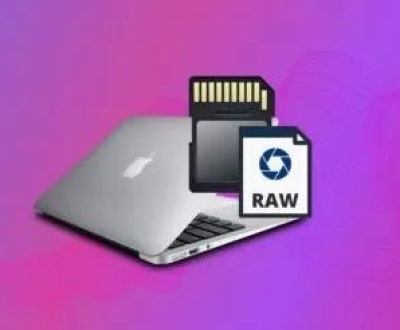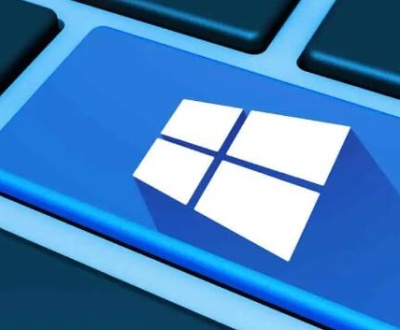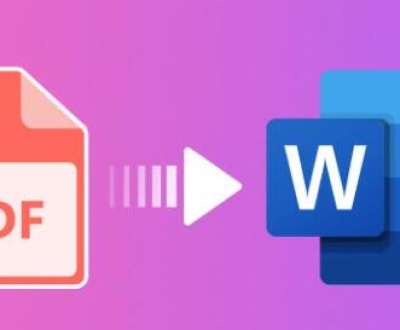In today’s digital world, data is critical to both personal and business operations. Whether it’s important documents, cherished photos, or sensitive work-related files, losing data can be devastating. However, the good news is that there are a variety of free data recovery programs that can help retrieve lost or deleted files.
1. Panda Assistant
Panda Assistant is a data recovery software designed to help users recover deleted or lost files with minimal effort. It offers a user-friendly interface, making it accessible even to those who are not technically inclined. The tool is equipped with a range of features aimed at ensuring a smooth and effective data recovery experience. Panda Assistant can scan and recover files from multiple types of storage devices, including hard drives, SSDs, USB sticks, memory cards, and more.

Key Features
1. Wide Compatibility:
One of the primary advantages of Panda Assistant is its broad compatibility with various storage devices. Whether you’re dealing with internal hard drives, external hard drives, SD cards, USB drives, or even corrupted partitions, Panda Assistant can recover your lost files with ease.
2. Multiple File Types Supported:
The software supports the recovery of a wide range of file types, including photos, videos, documents, audio files, and more. This versatility ensures that no matter what type of data you’ve lost, Panda Assistant is likely to be able to help you retrieve it.
3. Easy-to-Use Interface:
Panda Assistant features an intuitive and user-friendly interface. Users can easily navigate through the recovery process with just a few clicks, making it an excellent choice for those who are new to data recovery software. It doesn’t require any technical knowledge, so even non-expert users can successfully recover their files.
4. Deep and Quick Scan Options:
To ensure that all your lost files are recovered, Panda Assistant provides two types of scans: Quick Scan and Deep Scan. The Quick Scan is designed to recover recently deleted files, while the Deep Scan thoroughly scans the entire storage device for traces of deleted or lost files. This makes the tool versatile for various data loss scenarios.
5. Preview Feature:
Panda Assistant allows users to preview files before recovery. This feature is particularly helpful in ensuring that the files you want to recover are intact and the correct ones. It saves time by helping you avoid recovering unnecessary or corrupt files.
6. File Filtering and Sorting:
The software includes filtering and sorting options that allow you to narrow down your search. You can filter by file type, size, or name, making it easier to locate the specific files you’re trying to recover.
7. Safe Recovery Process:
The recovery process with Panda Assistant is designed to be non-invasive, meaning that it doesn’t overwrite or alter any existing data on the device. This ensures that you can safely recover your files without risking further data loss or corruption.
How Panda Assistant Works
The process of using Panda Assistant for data recovery is simple and straightforward. First, download and install the software on a different drive than the one you’re attempting to recover from to prevent overwriting any lost files. Next, select the drive or device where your files were lost, choose either the Quick Scan or Deep Scan option, and let the program run its search.
Once the scan is complete, Panda Assistant will display a list of recoverable files. You can preview these files, then select the ones you want to restore. Finally, select a safe location (other than the original drive) to save the recovered files.
2. TestDisk
TestDisk is an open-source data recovery tool that specializes in recovering lost partitions and repairing disk structures. It’s a powerful and comprehensive tool, ideal for more technical users who need a deep-level recovery solution. Although TestDisk is not as beginner-friendly as other programs, it is extremely effective for recovering partitions, especially in cases where the file system has become corrupted or a partition table has been damaged.
Key Features:
Supports a wide range of file systems, including FAT, NTFS, exFAT, ext2/ext3/ext4. and HFS+.
Can recover lost partitions, rebuild boot sectors, and repair corrupted file systems.
Works with a variety of storage devices, including hard drives, SSDs, and USB drives.
Works on both Windows and Linux systems, making it versatile across different platforms.
Limitations:
Command-line interface may be intimidating for beginners and non-technical users.
No graphical interface, which can make it challenging for those unfamiliar with data recovery processes.
3. PhotoRec
PhotoRec is another open-source data recovery tool developed by the creators of TestDisk. While TestDisk is focused on recovering lost partitions, PhotoRec is designed to recover files from damaged or corrupted media, including photos, documents, and videos. It can even recover files from disks that have been formatted or repartitioned.
Key Features:
Can recover over 400 different file formats, including photos, documents, and videos.
Works on a wide range of devices, including hard drives, SSDs, memory cards, and USB drives.
Can recover files from damaged or corrupted storage devices.
Works on multiple operating systems, including Windows, Mac OS X, and Linux.
Limitations:
The lack of a graphical interface makes it less user-friendly for beginners.
The recovery process can be slower compared to other tools due to the in-depth scanning methods used.
4. Disk Drill
Disk Drill is a popular data recovery tool that offers both a free and paid version. The free version of Disk Drill allows users to recover up to 500MB of data for free, making it an ideal choice for small-scale recovery tasks. It’s particularly user-friendly and has a sleek, modern interface, making it perfect for users who are not experienced with data recovery.
Key Features:
Easy-to-use interface with step-by-step instructions.
Supports a wide variety of file types, including documents, photos, and videos.
Offers multiple recovery methods, including quick scan and deep scan.
Provides extra features such as disk health monitoring and data protection tools.
Limitations:
The free version only supports the recovery of up to 500MB of data, after which you must upgrade to the Pro version.
Some advanced features like the ability to recover from a lost partition or a corrupted disk are only available in the paid version.
5. EaseUS Data Recovery Wizard
EaseUS Data Recovery Wizard is one of the most popular data recovery tools available. It’s known for its simplicity, ease of use, and ability to recover data from a wide variety of devices. The free version allows you to recover up to 2GB of data, which is perfect for users who need to recover a few files but don’t need the full suite of features.
Key Features:
User-friendly interface with easy navigation for all levels of users.
Supports recovery from a wide variety of devices, including hard drives, SSDs, USB drives, memory cards, and more.
Can recover a wide range of file types, from documents to multimedia files.
Preview feature allows users to see which files are recoverable before initiating the recovery process.
Limitations:
The free version is limited to recovering only 2GB of data, after which you need to upgrade to the paid version.
Some advanced features like partition recovery and raw recovery are only available in the paid version.
6. MiniTool Power Data Recovery
MiniTool Power Data Recovery is another excellent free data recovery tool that offers a simple user interface and a variety of recovery features. The free version allows you to recover up to 1GB of data, which may be enough for many basic recovery tasks. MiniTool’s software can recover files from a variety of storage devices, including hard drives, SSDs, and optical drives.
Key Features:
Simple, intuitive interface that makes it easy for beginners to use.
Supports a wide range of devices, including hard drives, SSDs, USB drives, and CD/DVD drives.
Allows users to preview recoverable files before starting the recovery process.
Offers multiple scanning modes, including quick scan and deep scan, to locate lost files.
Limitations:
The free version only allows recovery of up to 1GB of data, requiring an upgrade for larger recovery tasks.
Lacks some advanced features, such as partition recovery and RAID recovery, which are available in the paid version.
7. R-Studio
R-Studio is a powerful and versatile data recovery tool that provides professional-level recovery capabilities. The free version of R-Studio allows users to recover data from many types of storage devices, including hard drives, SSDs, USB drives, and memory cards. While R-Studio’s features are extensive, it’s better suited for advanced users and professionals due to its complex interface and robust toolset.
Key Features:
Can recover data from a wide range of file systems, including NTFS, FAT, exFAT, ext2/3/4. and more.
Can recover files from damaged, formatted, or corrupted storage devices.
Supports network recovery and allows users to recover data from remote systems.
Advanced features such as RAID recovery and disk imaging are included.
Limitations:
The free version has limited functionality compared to the full paid version.
Steep learning curve, which can be challenging for beginners or casual users.
8. Wondershare Recoverit
Wondershare Recoverit is another popular data recovery tool that offers both free and paid versions. The free version allows users to recover up to 100MB of data, which is useful for small data recovery tasks. It’s a great tool for retrieving lost documents, photos, videos, and other file types from a variety of storage devices.
Key Features:
Supports recovery from various storage devices, including hard drives, SSDs, USB drives, and memory cards.
Can recover over 1000 file types, including images, videos, and documents.
Provides a user-friendly interface with simple recovery steps.
Offers features like file preview, which allows users to check the recoverability of files before recovering them.
Limitations:
The free version only allows the recovery of up to 100MB of data, after which users must upgrade to the paid version.
Lacks advanced recovery features available in the paid version, such as RAW recovery and partition recovery.
9. Panda Data Recovery
Panda Data Recovery is a free, lightweight data recovery tool designed for simple file recovery tasks. It’s particularly suited for retrieving files from lost or formatted partitions, hard drives, and USB drives. While it may not have as many advanced features as some of the other tools on this list, it’s a good option for users who need to recover simple files without any complicated processes.
Key Features:
Simple and easy-to-use interface.
Supports a wide range of devices, including hard drives, SSDs, USB drives, and memory cards.
Can recover a variety of file types, including photos, documents, and videos.
Offers both quick scan and deep scan modes for better recovery.
Limitations:
Lacks advanced recovery features such as partition recovery and RAID support.
The free version may not support large-scale recovery tasks.
About us and this blog
Panda Assistant is built on the latest data recovery algorithms, ensuring that no file is too damaged, too lost, or too corrupted to be recovered.
Request a free quote
We believe that data recovery shouldn’t be a daunting task. That’s why we’ve designed Panda Assistant to be as easy to use as it is powerful. With a few clicks, you can initiate a scan, preview recoverable files, and restore your data all within a matter of minutes.
Subscribe to our newsletter!
More from our blog
See all postsRecent Posts
- Retrieve deleted videos from sd card 2025-04-25
- How to retrieve damaged sd card? 2025-04-25
- Retrieve photos from sd card 2025-04-25

 Try lt Free
Try lt Free Recovery success rate of up to
Recovery success rate of up to









